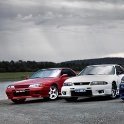Turbo Failure On Rb26
Announcements
-
Similar Content
-
Latest Posts
-
Hi guys, Sorry to butt in and take it slightly off course, although still on the VCAM subject. I had VCAM put into my Tomei 2.8 bottom end and I struggle to take off because the engine has very little torque caused by VERY low dynamic compression at 60psi. But once off the mark and especially on boost, the engine rev happily all the way to 8000rpm and makes 630hp at 20psi of boost on E85 at the rear hubs. Has anyone had any similar experience or any suggestions on what might cause this low compression at low rpm? I am in the process of converting it into a 8hp transmission and with this low torque, the engine would not even stay running until the throttle is opened to more than 30% and then I loose all vacuum.
-
By Watermouse · Posted
Last year I got a set of MCA street coilovers for my turbo Forester after my son hitting a concrete gutter/wall on a small bridge causing the whole drivers side suspension to get bent because the rain just made the car slide out I love them, I think they were $2400. even had a hiccup of have the wrong hub configuration (my fault) so got onto MCA and they sent the correct shock ends overnight parts from QLD, for free! I was very impressed with their customer service and quality of the product -
By joshuaho96 · Posted
They've had some weird failures on their brake actuators. One of them was because they added some kind of lubricant to the factory fill brake fluid that aftermarket brake fluid didn't have so it would affect the seals. Another was just mysterious, probably internal corrosion or something eating away at Prius brake actuators. Parts alone for those are a few thousand USD so not a cheap fix. -
Selling a genuine Nissan Skyline R33 Coupe 8-Pin Power Window Master Switch Part No. 25401-26U10 Price $300 IMPUL Gear Knob – Rare JDM Upgrade Upgrade your interior with this genuine IMPUL gear knob – a rare and stylish addition to any JDM build. Premium quality, perfect fit, and an authentic Japanese touch for your ride. Price:$300 Nissan Skyline R33 (Series 2) Sedan Tail Lights Immaculate Condition OEM JDM S2 a pair of OEM Skyline R33 Series 2 sedan tail lights in excellent condition. These are becoming harder to find, especially in this state. Price:$900 Located in Melbourne (Western Suburbs) – Shipping available Australia wide at buyer’s expense. DM if you need anymore details.
-



Recommended Posts
Create an account or sign in to comment
You need to be a member in order to leave a comment
Create an account
Sign up for a new account in our community. It's easy!
Register a new accountSign in
Already have an account? Sign in here.
Sign In Now